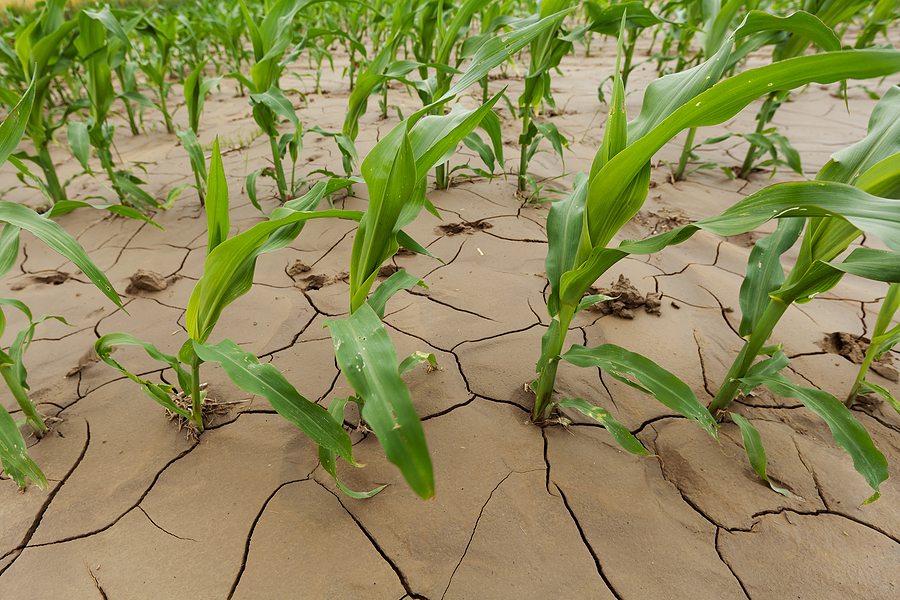The U.S. House of Representatives passed a $383 million disaster relief bill on Thursday that provides political shelter for lawmakers during the worst drought in half a century, but may not release the aid for months to come.
Nearly two-thirds of the continental United States, including prime ranch and farm territory, is in the grip of drought and lawmakers were under pressure to help livestock producers under siege from soaring feed prices.
Congress has been deadlocked on passing a full farm bill but the drought portion was seen a way to get to aid to hard-hit ranchers, although it was unclear whether the Senate will move on the legislation.
The House bill, which allows payments of up to $100,000 per farm, will help cattle and sheep ranchers but not hog and poultry. Row crop farmers have insurance but programs for livestock expired in 2011.
With Congress scheduled to begin a five-week vacation on Friday, there was little time for the Senate to act on the bill. Senators might reject it and insist on their five-year farm bill, which includes disaster aid for this year without the cuts demanded by the House, or let the bill wait until it returns on Sept 10.
“It’s as simple as that: There is a problem out there. Let’s fix it,” said House Agriculture Committee Chairman Frank Lucas ahead of the 223-197 passage of the bill. He promised to press for a farm bill this fall.
Main-line farm groups were lukewarm toward the disaster bill, saying it came at an unfair price — $639 million in soil and water conservation cuts, including $256 million for deficit reduction — when a full-scale farm bill is needed. Environmental, sportsmen and conservation groups opposed it.
“It’s better than nothing. It’s not what we should be doing,” said Collin Peterson, the Democratic leader on the Agriculture Committee. He predicted the bill would stall in the Senate.
If enacted, it could be nearly half a year before producers see aid. The House bill allows three months for the Agriculture Department to write rules for disaster aid before it accepts claims for aid and calculates a payment.
Under the bill, USDA would pay 75 percent of the value of livestock killed by drought and 60 percent of feed costs for one to three months for stock on the range, depending on severity of drought in a locality. There was also $20 million for feed and water shortages for livestock producers, bee keepers and fish farmers as well as a program to help tree farmers.
Bob Goodlatte of Virginia, a former Agriculture Committee chairman, said the Obama administration should reduce the federal requirement to mix biofuels into gasoline as a drought relief step, given the severe damage to the corn crop.
“We should not be in the position of choosing between food and fuel,” said Goodlatte, who helped organize a letter, signed by 150 representatives that supports a “meaningful nationwide adjustment” of the mandate to use corn-based ethanol.
USDA will make its first estimate of the fall harvest next week. One forecaster pegged the corn crop at 11 billion bushels, or 11 percent smaller than last year. It would be the third year that corn output has declined and mean extraordinarily tight supplies.
House Republican leaders initially tried to link the disaster bill to a one-year extension of the 2008 farm law, which expires on Sept 30. They say the Senate farm bill is unacceptable, but their own bill faces too much opposition to risk a vote.
Speaker John Boehner, the leader of the House, told reporters he did not believe there was a majority for the farm bill. “Having said that, I do believe that the action we take today is responsible,” he said, referring to the disaster bill.
(Additional reporting by Richard Cowan and David Lawder; Editing by Leslie Gevirtz)
Topics USA Legislation Agribusiness
Was this article valuable?
Here are more articles you may enjoy.



 Trump’s Bond Insurer Tells Judge Shortfall Is ‘Inconceivable’
Trump’s Bond Insurer Tells Judge Shortfall Is ‘Inconceivable’  Wildfires Are Upending Some of the Safest Bets on Wall Street
Wildfires Are Upending Some of the Safest Bets on Wall Street  California Sees Two More Property Insurers Withdraw From Market
California Sees Two More Property Insurers Withdraw From Market  FBI Says Chinese Hackers Preparing to Attack US Infrastructure
FBI Says Chinese Hackers Preparing to Attack US Infrastructure 

